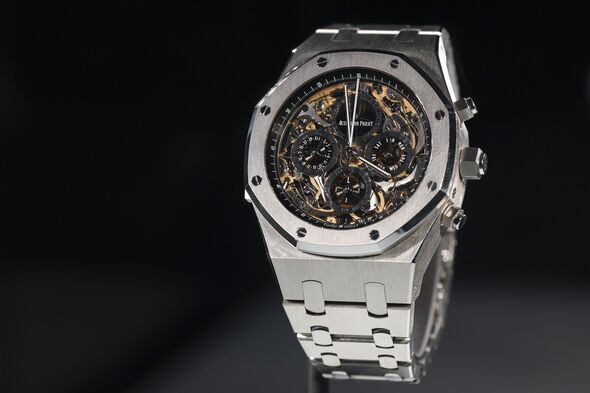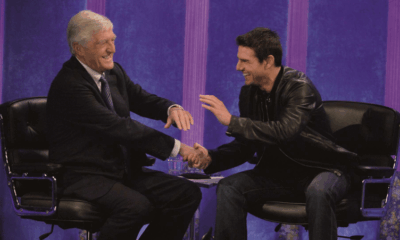Lifestyle
Expert Reveals Key Tips to Spot Luxury Watch Counterfeits

As demand for luxury timepieces continues to rise, concerns regarding counterfeit watches have intensified. Expert watchmaker Mark Baldwin, from Watches2U, warns that identifying fakes has become increasingly challenging as counterfeiters employ sophisticated techniques to mimic high-end brands.
With over four decades of experience, Baldwin highlights the potential hazards associated with purchasing counterfeit watches. He emphasizes that while some fakes are easily identifiable, many high-end replicas are difficult to distinguish from genuine products. “In the past, fakes were really easy to identify,” Baldwin said. “Now, high-end counterfeits are much harder to spot.” He cautions that unsuspecting buyers can end up paying full price for a fake that holds a fraction of its supposed value, often crafted from inferior materials that may not meet safety standards. Furthermore, Baldwin points out that the counterfeit goods industry can fund organized crime.
Luxury brands such as Rolex, Omega, and Tag Heuer are frequent targets for fraudsters due to their popularity among consumers. Baldwin advises potential buyers to consider several key factors when assessing the authenticity of a watch.
Key Indicators of Authenticity
One of the most obvious signs of a counterfeit watch is the presence of spelling errors on the dial. An off-centre logo can also indicate a fake. Baldwin emphasizes the importance of examining the colours and fonts used on the watch face to ensure they align with those of the genuine article.
In addition to visual cues, he urges buyers to pay attention to the materials and craftsmanship. “With a real luxury watch, the metal strap links should move freely,” Baldwin explains. “If the links are stiff or awkward to manoeuvre, this could be a warning sign.” He also notes that luxury watches should have a substantial weight. If a watch feels unusually light, it may lack the quality materials expected in a genuine timepiece.
Another critical point to consider is the sound of the watch. Baldwin advises potential buyers to listen closely: “A Swiss timepiece is normally quiet, so put it to your ear. If you can hear loud ticking, then this is a strong indication your watch might not be all it seems.” For instance, he points out that a genuine Rolex rarely has a quartz movement; it should feature a mechanical movement that sweeps around the face rather than ticking in a standard manner.
Documentation and Packaging
Authentic luxury watches typically come with premium packaging and relevant paperwork. Baldwin suggests that if a watch lacks proper documentation, it should raise suspicions. “If your chosen watch comes with little to no packaging, then be cautious,” he advises. Buyers should examine the box, warranty cards, and user manual closely.
“It’s essential that your watch comes with documentation or certificates to confirm its legitimacy,” Baldwin states. “If this is missing, it could be a fake.” He encourages anyone with doubts about a watch’s authenticity to consult an authorized expert for verification.
Ultimately, Baldwin stresses the importance of trusting one’s instincts. “If a deal feels too good to be true, it probably is,” he warns. As the market for luxury watches continues to grow, being informed about how to recognize counterfeits is essential for consumers looking to make a significant investment.
-

 World2 weeks ago
World2 weeks agoCoronation Street’s Shocking Murder Twist Reveals Family Secrets
-

 Entertainment1 week ago
Entertainment1 week agoAndrew Pierce Confirms Departure from ITV’s Good Morning Britain
-

 Entertainment5 months ago
Entertainment5 months agoKate Garraway Sells £2 Million Home Amid Financial Struggles
-

 Entertainment4 months ago
Entertainment4 months agoAnn Ming Reflects on ITV’s ‘I Fought the Law’ Drama
-

 Entertainment1 month ago
Entertainment1 month agoCoronation Street Fans React as Todd Faces Heartbreaking Choice
-

 Health4 months ago
Health4 months agoKatie Price Faces New Health Concerns After Cancer Symptoms Resurface
-

 World1 month ago
World1 month agoBailey Announces Heartbreaking Split from Rebecca After Reunion
-

 Entertainment2 weeks ago
Entertainment2 weeks agoTwo Stars Evicted from I’m A Celebrity Just Days Before Finale
-

 World2 weeks ago
World2 weeks agoKevin Sinfield Exceeds Fundraising Goal Ahead of Final Marathons
-

 Entertainment4 months ago
Entertainment4 months agoCoronation Street’s Carl Webster Faces Trouble with New Affairs
-

 Entertainment3 months ago
Entertainment3 months agoWhere is Tinder Swindler Simon Leviev? Latest Updates Revealed
-

 Entertainment5 months ago
Entertainment5 months agoMarkiplier Addresses AI Controversy During Livestream Response











